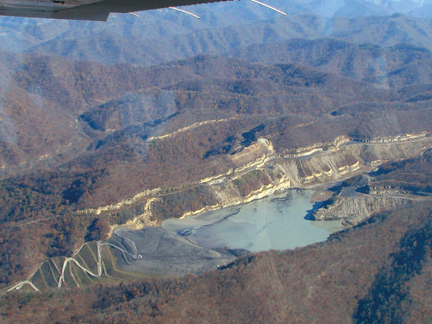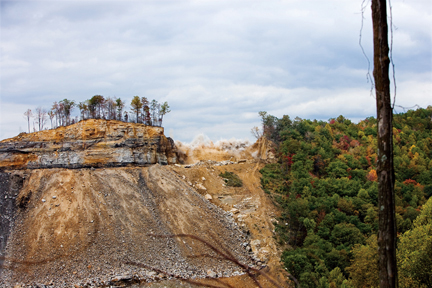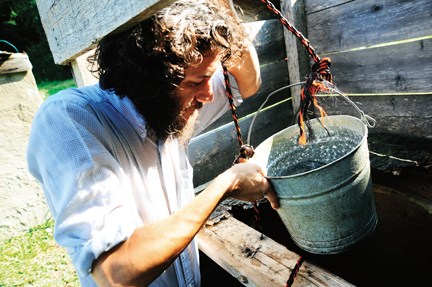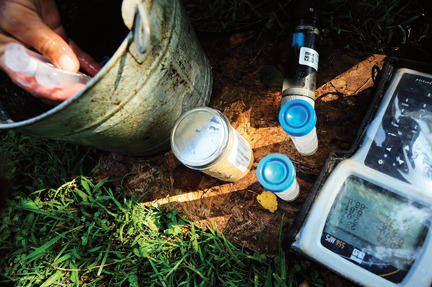Activist on Coal River
Mathew Louis-Rosenberg ’05 intends to “stay to the end” in West Virginia—fighting for safe drinking water and a solution to mountaintop removal mining.
The situation in the Coal River valley was grim. The latest court ruling had been unfavorable. Clear cutting the forest, a forerunner of blasting, had started on the last intact mountain. There was an epic meeting, lasting hours—one that would take the decade-long fight against mountaintop removal (MTR) strip mining in West Virginia in a daring direction.
Mathew Louis-Rosenberg ’05 remembers the 20 or so people crammed together in the little room, the intensity, the talk that “it was time to create an iconic place, an iconic fight,” the doubts that they could organize such an ambitious campaign, the fear that participants would face real danger. Massey Energy, the giant coal company in the valley, played for keeps. Louis-Rosenberg recalls how, in the end, legendary environmental hell-raiser Mike Roselle spoke up and persuaded the rest of them they could do it.
They would undertake a campaign of direct action and nonviolent civil disobedience on mountaintop removal mine sites in the area. Massey would be their primary target and saving Coal River Mountain their immediate aim.
At that point in early 2009, the campaign—called Climate Ground Zero (CGZ)—was simply a declaration, “a hail Mary pass,” says Louis-Rosenberg. They had no extra manpower to call on, no money. While waiting for more volunteers to show up, a handful of them launched their first “actions.” Louis-Rosenberg went on two—on the first, crossing a dam holding back 2.8 billion gallons of coal waste above an elementary school and then blocking a truck haul road, and on the second, accompanying six others who chained themselves to huge earth-moving equipment for four hours. In both instances he was arrested but not jailed.
“Nobody had walkie-talkies on actions. Hell, half the time, we didn’t even have a map,” Louis-Rosenberg says of those makeshift days. But within a year, CGZ had hosted an action camp for 30 volunteers and put up a tree-sit in winter that shut down a blasting site on Coal River Mountain for nine days. These were in-your-face tactics. A kind of guerrilla warfare.
Now, after 18 months and more than 20 actions, CGZ is maintaining the largest and most sustained campaign of direct action in the Appalachian coalfields in more than 20 years. Members say they are breaking the law to halt damage against nature, communities, and health so grave it amounts to a crime. The leveling of mountains to expose coal seams has left valleys and rivers clogged with rubble, wells ruined, homes uninhabitable, and suspected cancer clusters among residents.
In its defense, Massey says that mountaintop removal mining is already regulated by local, state, and federal law. Massey adds that reclamation plans must be submitted before a project is started, requiring land restoration to valuable use or purposes—and that communities across Appalachia have benefited from the creation of much-needed flat land for economic development. The economic benefits include mining jobs and a supposed 3.5 related sales, services, and supply jobs for each miner employed.
Opponents of MTR say regulators serve industry, not citizens. In 2008, federal regulators settled with Massey on a $20 million fine for more than 4,000 Clean Water Act violations after West Virginia regulators took no action. As for jobs, activists point out that the state’s 7,000 surface miners make up less than 1 percent of the state’s work force—and even with the 3.5-job multiplier, the total represents less than 5 percent of the state’s jobs. They add that the counties that mine the most coal see little benefit—they remain the state’s poorest.
Massey has called the protesters “criminals” and “environmental terrorists” and is pursuing court injunctions and financial damages against them. But CGZ has not been cowed. Volunteers and donations for legal expenses keep coming in.
CLIMATE GROUND ZERO IS ONE OF A FEW environmental groups—most small—that practice civil disobedience. Major organizations like the Sierra Club concentrate on halting MTR by traditional methods—an aroused citizenry, legislation, litigation, and the like. Observers say the “big greens” avoid even supporting civil disobedience by others for fear of offending some donors, being accused of conspiracy, or alienating citizens otherwise willing to sign a petition or phone a politician.
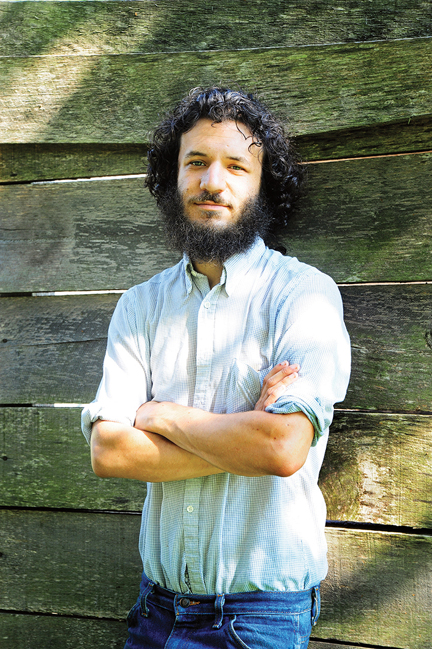
Mathew Louis-Rosenberg ’05 followed his grandparents and parents into community organizing. His first memory is being on a protest march with his parents, and he says that he’s “27 with 22 years of experience.”
But no single approach can halt MTR, notes Vernon Haltom, co-director of the community group Coal River Mountain Watch. Civil disobedience won’t stop the practice, he says, unless there’s a tangible alternative policy “that decision makers can latch onto.” This makes legislative action and changes in government agency rules also essential. In turn, Haltom says, tangible policy needs to be backed by visible public outrage against MTR, adding that “direct action and civil disobedience expresses the sense of urgency that years of pleading and lobbying don’t.” He also notes that civil disobedience can actually shut down dangerous mining operations—if only for hours or days.
CGZ members have paid a price for their actions. As of mid-August, more than 100 had been arrested, many two or more times, and 48 had spent time in jail. In the early months, protesters were simply fined $100 or less. When arrests began, they were released without bail or had only to put up a modest amount. Now bail is set in the thousands and is often required in cash for offenses as minor as trespassing.
For a long time, jail sentences were rare or short. But in April, Louis-Rosenberg’s partner Jacqueline Quimby was sentenced to 60 days after a jury found her guilty of trespassing, conspiracy, and obstruction—common charges for CGZ actions—for blocking a haul road. She had never been arrested before. Her seven companions took plea deals and got no jail time. Roselle, now CGZ campaign director, thinks the magistrate was trying to make an example of Quimby for insisting on a jury trial—something costly and rare here.
CGZ members contend the state’s judicial system has come down hard on them. Louis-Rosenberg notes that when a woman supporting Massey broke through police lines at a rally and punched prominent local activist Judy Bonds in the face, she was fined $100. “Our nonviolent actions have resulted in jail sentences of up to 60 days,” he says. “Where’s the justice in that?”
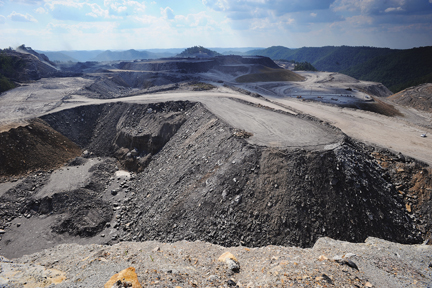
Coal companies literally blast the tops off of mountains to get to the coal seams underneath. Debris from this form of mining fills valleys where pristine streams once flowed. Mountaintop removal was exempted from surface mining regulations passed by Congress in 1977.
For his action at the dam, Louis-Rosenberg got a five-day jail sentence, which was thrown out on appeal. He also was ordered to keep off Massey property and sued for damages by the company (a trial is pending) but was acquitted of contempt for breaking an earlier temporary restraining order. For the second action, rather than plead no contest, he insisted on a jury trial at which he was convicted and fined $2,700. He was arrested a third time for failing to appear in court on a trespass charge, tried, and acquitted.
LOUIS-ROSENBERG HAD HIS FINGERS IN MANY PIES. He scouted sites of possible actions. He was the unofficial campaign paralegal, communicating with the pro bono law team and developing legal strategy. He worked on the legal defense fund. He wrote for the campaign’s website, newsletter, and outside publications. He helped plan the first action camp and spoke at Swarthmore and Oberlin to raise money and volunteers.
Typically, about 25 activists, most young, live in the CGZ base camp—four little cabins and a few tents in Rock Creek Hollow. They attend church, go to line dances, and work on local projects, such as maintaining community gardens and helping people whose water has apparently been contaminated by mining. Local residents are sharply divided between those opposed to what MTR is doing to their land and way of life and those who depend on the coal industry for a living or have relatives who do. CGZ members have faced some hostility and harassment, especially from strip miners worried that curbing MTR would cost them their jobs. But other locals have given CGZ members deer, catfish, and firewood and tipped them to threats against their camp.
Although Louis-Rosenberg was going full bore for CGZ, he managed to devote a comparable amount of time to community work, much of it as an organizer. If anyone was born to do community organizing, it’s Mathew Louis-Rosenberg. Both his parents and grandparents have followed that calling. Raised in New York’s Catskill Mountains, Louis-Rosenberg’s first memory is being on a march with his parents. As an organizer, he calls himself “27 with 22 years of experience.”
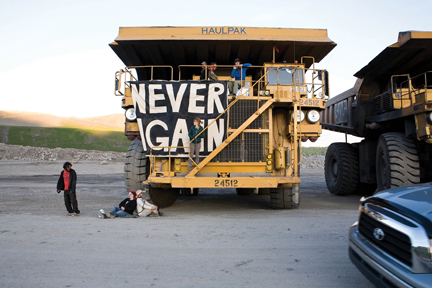
Below: Louis-Rosenberg (left) acted as liaison to police for a group of Climate Ground Zero activists who locked themselves to giant mining trucks on Kayford Mountain in May 2009. All were arrested for trespassing on Massey Energy property.
For inspiration, he looks not only to his parents and grandparents but also to many of the dedicated native-born and other activists he’s come across near Coal River. One such comrade is 95-year-old Ken Hechler ’35, a longtime foe of strip mining who last year joined two CGZ protests and was arrested at one. Hechler, a fixture in West Virginia politics for nearly half a century, recently ran a Democratic primary challenge to Gov. Joe Manchin for the U.S. Senate seat of the late Robert Byrd. Hechler’s platform had but one plank—ending MTR.
Louis-Rosenberg heard about the struggle on Coal River while doing volunteer work for two years in New Orleans after Katrina. There he met young people from Mountain Justice, an organization working in Appalachia’s coalfields. He visited the Coal River area and was hooked. “I was kind of star struck,” he says “because southern West Virginia is legendary to me. I grew up on stories of the UMWA [United Mine Workers of America].” He settled on Coal River in 2008 as a paid organizer for the Sludge Safety Project (SSP), helping communities suffering problems that SSP blamed on a nasty by-product of coal mining known as slurry or sludge.
SSP’s first campaign—a collaboration of coalfield citizens and two environmental groups—grew out of the discovery of toxic drinking water and widespread illness in Rawl, W.V., the suspected result of slurry.
Coal is prepared for market by washing it with water containing chemical coagulants, flocculants, and surfactants that help separate the coal from rock waste. After processing, the wastewater (slurry) is pumped into impoundments—lifeless lakes contained by huge dams—or injected into abandoned underground mines. Billions of gallons remain, gradually leaking into groundwater and underground aquifers. There’s evidence that blasting on nearby MTR sites makes water contamination from slurry even worse.
Slurry contains heavy metals including arsenic, mercury, boron, and selenium—metals known to cause cancer; brain, kidney, liver, and nervous system damage; and hair, nail, and weight loss. There are laws regulating injections and impoundments but enforcement is riddled with problems, according to Louis-Rosenberg.
The coal industry, says Stephanie Tyree, Louis-Rosenberg’s co-coordinator at SSP, will “tell you up and down that slurry is safe, that it’s not toxic, that it doesn’t travel into people’s groundwater.” But when some people turn on the tap, she says, “[their water] comes out black with lumps of coal in it.”
Clean municipal water has finally been brought to Rawl, but other water trouble came to light in Prenter Hollow on Coal River, which is surrounded by 11,000 acres of mining operations. Some residents’ well water had had a foul odor for years. Four women started organizing their neighbors. One, Maria Lambert, had made a list of people who, she said, “were living with illnesses or who had died of certain illnesses, and most of them are cancer.” It ran 12 handwritten pages.
Although a cause-effect relationship between slurry and illness has yet to be proven, the plaintiffs’ brief in the Rawl lawsuit makes an impressive medical case for a connection.
A similar lawsuit filed in Prenter contains “an enormous amount of medical evidence” of disease clusters there, Louis-Rosenberg says. Likewise, SSP’s own health surveys disclosed that of some 100 people interviewed, 90 percent had had their gallbladders removed. On one short stretch of road, five people had suffered brain tumors.
SSP urged government agencies to provide emergency water to Prenter, but, recalls Louis-Rosenberg, “Everyone said, ’There’s no money for emergency water.… You’re just going to have to wait for a water line.’” In Rawl, that had taken 13 years. So SSP decided it would supply emergency water itself. Louis-Rosenberg says his disaster-relief experience in New Orleans convinced him they could do it, and he overcame his colleagues’ doubts.
SSP needed money to fund the operation. On a trip home, Louis-Rosenberg ran into Swarthmore classmate Rebecca Galaski Murchadha, whose family had set up the Paul and Vivian Olum Foundation. He quickly succeeded in obtaining $10,000 for the water fund. He says that Vivian Olum, who’s on the foundation board, had taught in a one-room school in eastern Kentucky in the 1970s and always wanted to finance a coalfield project. Tyree suspects Louis-Rosenberg’s personality and passion also had a lot to do with it. “I’ve seen Mat speak about these things. He’s able to make it very real and very urgent,” she says.
Louis-Rosenberg and others raised another $10,000 through public speaking and online appeals. Meantime, he and SSP’s Glen Collins started hauling 55-gallon barrels to more than 100 houses, set up hand pumps, and hired a local man to truck in clean water every two weeks. They rushed, Louis-Rosenberg says, “because we knew people were dying.” The first water was delivered two days before Christmas in 2008. The turnaround in some people’s health was dramatic, he says.
After that, the community—which had developed several strong organizers—took over. “We organized ourselves out of a job,” he says, “which is the goal of every good organizer.”
Last May, after just a two-year wait, Prenter got a water line, supplying close to 200 of its 275 homes. Political connections and aggressive lobbying by residents apparently jumped it up the list. But there are no plans to bring water to the rest of Prenter Hollow, because the cost is prohibitive, says community organizer Jennifer Massey. Instead, the county and a coal company are trying to come up with a plan to treat a large well shared by about 30 homes. The other 45 or so homes “are out of luck,” Massey says.
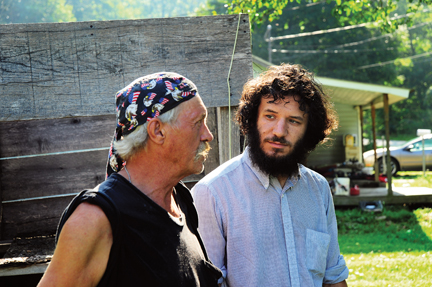
The young activists have faced hostility from some strip miners worried that curbing MTR could cost jobs, but others in the communities where they have worked see them as allies and friends, providing deer, catfish, and firewood—and tipping them to threats against their camp.
In the meantime, more than 200 Prenter residents have sued eight coal companies for poisoning their water with slurry. So far, court-ordered mediation has led the companies to donate enough money to supply emergency water to the houses not on the water line for about 18 months.
Louis-Rosenberg says the situation in Prenter was invaluable in educating other communities, the public, and the legislature about slurry. It won attention from the local press and even front-page mention in The New York Times. SSP has been praised for its organizing by the Environmental Protection Agency and for its citizen lobbying by environmentalists. SSP is now working in three more communities around the state afflicted with polluted water.
LOUIS-ROSENBERG'S OWN WORK has ranged from lobbying the state legislature about injections and impoundments to scientific sampling of people’s water. A math and physics major in college, he can interpret the lab test findings, which Tyree finds impenetrable. He makes the data understandable to anyone, she says, and is good at “tamping down hysteria.” He also educates people about bad water and its health effects. “He’s a great teacher,” Tyree says.
Even when Louis-Rosenberg simply speaks on a panel, Tyree has seen people respond to him. “So many people contact us—‘Can we volunteer?’ ‘How can we help?’”—which she credits to his presentations and conversations. To her, it’s another form of organizing.
But for all the outward success in Prenter, Louis-Rosenberg knows there were problems. He worries that he put too much of a load on local organizers and almost burned them out. “I spent a lot of time going back and criticizing the work that I did,” he says.
A year ago, Louis-Rosenberg realized working intensely on both the action campaign and SSP was exhausting him. He figured CGZ was now strong enough to do without him and began reducing his role. Still, he’s one of the few old hands at the CGZ base camp, around from the campaign’s beginning.
He’s become the resident expert on past CGZ actions, the state’s legal system, the technical side of mining, the history of organizing and activism, and more. “Sometimes it feels like I spend entire days just answering peoples’ questions,” he says.
Most volunteers who come to the base camp leave after weeks or months, he notes. “I’m looked up to as a leader in this community, this work. The only thing that’s really different about me is I’ve made a deep commitment to stay to the end.” To him that means a legislated end to slurry production and some solution to MTR. The point, he says, is that the people who live on Coal River can’t leave—not without losing their homes and everything else they’ve fought for, and true solidarity with them means not leaving either.
He’s grateful to his family. “I’ve been given this great gift of all this knowledge and history and support—totally unconditional support from my family, which so few people have doing this work…. A lot of people who are here … were raised in deeply conservative households, and doing this work creates all this conflict with family.” At best, he says, the parents of his fellow activists say, “I know you’re doing good things, but shouldn’t you get a real job?” or “Please, don’t go to jail.”
In his case, the first time he was arrested he wrote on Facebook, “Mathew Louis-Rosenberg is celebrating his recent arrest.” And his father posted, “Oh, congratulations.”
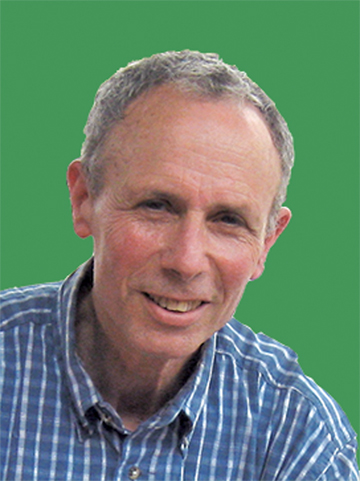 Peter Slavin is a freelance journalist who has been doing feature and investigative work in West Virginia since 1995, watching local struggles against Big Coal develop into a national movement. Besides strip mining, he has written about school consolidation, famed novelist Denise Giardina’s run for governor, the “mine wars” a century ago, wind farms, and music.
Peter Slavin is a freelance journalist who has been doing feature and investigative work in West Virginia since 1995, watching local struggles against Big Coal develop into a national movement. Besides strip mining, he has written about school consolidation, famed novelist Denise Giardina’s run for governor, the “mine wars” a century ago, wind farms, and music.
 Email This Page
Email This Page